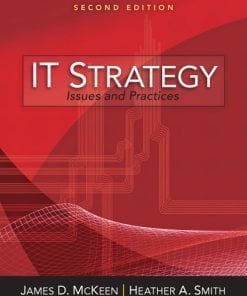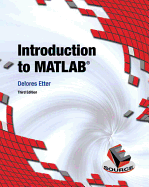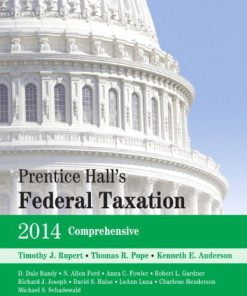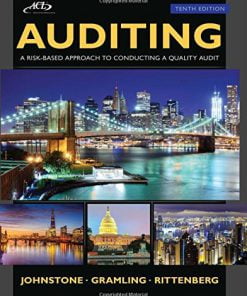Solution Manual for Industrial and Organizational Psychology: Research and Practice, 6th Edition Paul E. Spector
$55.00 Original price was: $55.00.$29.99Current price is: $29.99.
Solution Manual for Industrial and Organizational Psychology: Research and Practice, 6th Edition, Paul E. Spector,
This is completed downloadable of Solution Manual for Industrial and Organizational Psychology: Research and Practice, 6th Edition Paul E. Spector

Product Details:
- ISBN-10 : 0470949767
- ISBN-13 : 978-0470949764
- Author: Paul E. Spector
“The field of industrial and organizational psychology continues to see attention and growth and has become one of the major applied specialties in the study of psychology. Since findings from research in this field are relevant to everyone who has helda job, and the field has developed proven methods that businesses and organizations need, industrial and organizational psychology is an excellent demonstration of how society can benefit from the study of psychology. The 6th Edition of Industrial and Organizational Psychology incorporates all new and updated literature that has been written on the topic since the 5th edition. Spector’s goal is to provide an overview and comprehensive understanding of organizational psychology. Each of the major areas that comprise industrial and organizational psychology is covered in five parts: introduction to the discipline; assessment of jobs, performance, and people; selecting and training employees; the individual and the organization; and the social context ofwork. ”
Table of Content:
Brief Contents
PART I
䉴 CHAPTER 9
INTRODUCTION
Feelings About Work: Job Attitudes and Emotions 215
䉴 CHAPTER 1
Introduction
䉴 CHAPTER 10
3
䉴 CHAPTER 2
Productive and Counterproductive Employee Behavior 244
Research Methods in I/O Psychology 24
䉴 CHAPTER 11
Occupational Health Psychology
269
PART II
ASSESSMENT OF JOBS, PERFORMANCE, AND PEOPLE
PART V
䉴 CHAPTER 3
䉴 CHAPTER 12
Job Analysis
53
Work Groups and Work Teams
䉴 CHAPTER 4
Performance Appraisal
THE SOCIAL CONTEXT OF WORK 301
䉴 CHAPTER 13
78
Leadership and Power in Organizations
325
䉴 CHAPTER 5 䉴 CHAPTER 14
Assessment Methods for Selection and Placement 106
Organizational Development and Theory 352
PART III
Appendix: Guide To Graduate School Admission 373
SELECTING AND TRAINING EMPLOYEES
References
䉴 CHAPTER 6
Selecting Employees
137
Glossary
381
421
䉴 CHAPTER 7
Training
167
PART IV
Author Index
435
Subject Index
445
THE INDIVIDUAL AND THE ORGANIZATION 䉴 CHAPTER 8
Theories of Employee Motivation
193
xi
䉴
Contents
PART I
INTRODUCTION 䉴 CHAPTER 1
Introduction
3
What Is I/O Psychology? 5 Activities and Settings of I/O Psychologists 6 I/O Psychology as a Profession 8 I/O Psychology as a Science 8 History of the Field of I/O Psychology 10 I/O Psychology Beyond the United States and United Kingdom What It Takes to Become an I/O Psychologist 14 Internet Resources for I/O Psychologists and Students 19 Ethics of the I/O Field 20 Humanitarian Work Psychology 21 Chapter Summary 22
13
䉴 CHAPTER 2
Research Methods in I/O Psychology
24
Research Questions 26 Important Research Design Concepts 27 Variables 27 Research Setting 28 Generalizability 28 Control 29 Random Assignment and Random Selection Confounding 30 Research Designs 31 Experiments 31 Survey Designs 32 Observational Designs 33 Qualitative Studies 34 Measurement 34 Classical Measurement Theory 35 Reliability 36 Validity 38 Statistics 39 Descriptive Statistics 39
30
Measures of Central Tendency and Dispersion 39 Correlation 41
xiii
xiv 䉴 Contents Regression 43 Inferential Statistics 44 Meta-Analysis 46 Mediator and Moderator Variables 47 Ethics of Research 48 Chapter Summary 49 PART II
ASSESSMENT OF JOBS, PERFORMANCE, AND PEOPLE 䉴 CHAPTER 3
Job Analysis
53
What Is Job Analysis? 54 The Job-Oriented Approach 55 The Person-Oriented Approach 57 Purposes of Job Analysis 57 Career Development 58 Legal Issues 59 Performance Appraisal 60 Selection 60 Training 61 Vocational Counseling 61 Research 61 How Job Analysis Information Is Collected 62 Who Provides the Information? 62 Approaches to Collecting Job Analysis Information Perform Job 63 Observe Employees Working 63 Interview Employees 63 Administer a Questionnaire 63 Multiple Approaches 64
Methods of Job Analysis 65 Job Components Inventory 65 Functional Job Analysis 65 Occupational Information Network 66
Position Analysis Questionnaire 68 Task Inventory 69 Choosing a Job Analysis Method 71 Job Analysis Methods for Work Teams 71 Reliability and Validity of Job Analysis Information Reliability 72 Validity 72 Job Evaluation 73 Comparable Worth 74 Chapter Summary 75
71
63
Contents 䉳 xv 䉴 CHAPTER 4
Performance Appraisal
78
Why Do We Appraise Employees? 79 Administrative Decisions 79 Employee Development and Feedback 80 Research 80 Performance Criteria 80 Characteristics of Criteria 81 Actual Versus Theoretical Criterion 81 Contamination, Deficiency, and Relevance 81 Level of Specificity 83
Criterion Complexity 84 Dynamic Criteria 85 Contextual Performance 86 Methods for Assessing Job Performance 86 Objective Measures of Job Performance 87 Subjective Measures of Job Performance 89 Graphic Rating Forms 89 Behavior-Focused Rating Forms 89 Development of Behavior-Focused Forms 92 Cognitive Processes Underlying Ratings 93 Models of the Rating Process 93 Content of Subordinate Effectiveness 94 Rater Bias and Error 95 Halo Errors 95 Distributional Errors 96 Control of Rater Bias and Error 96 Error-Resistant Forms to Assess Performance 97 Rater Training to Reduce Errors 97 Other Factors That Influence Job Performance Ratings 99
360-Degree Feedback 100 The Impact of Technology on Performance Appraisal 101 Legal Issues in Performance Appraisal 101 Chapter Summary 103 䉴 CHAPTER 5
Assessment Methods for Selection and Placement
106
Job-Related Characteristics 108 Psychological Tests 108 Characteristics of Tests 109 Group Versus Individually Administered Tests 110 Closed-Ended Versus Open-Ended Tests 110 Paper-and-Pencil Versus Performance Tests 110 Power Versus Speed Tests 110
Ability Tests
111
Cognitive Ability Tests 111 Psychomotor Ability Tests 112
xvi 䉴 Contents Knowledge and Skill Tests 114 Personality Tests 115 Emotional Intelligence Tests 116 Integrity Tests 117 Vocational Interest Tests 118 Drug Testing 119 Biographical Information 119 Interviews 121 Work Samples 125 Assessment Centers 125 Electronic Assessment 130 Electronic Administration of Psychological Tests Computer Adaptive Testing 131 Chapter Summary 132
130
PART III
SELECTING AND TRAINING EMPLOYEES 䉴 CHAPTER 6
Selecting Employees
137
The Planning of Human Resource Needs 139 Recruiting Applicants 140 Selecting Employees 142 How Do Organizations Select Employees? 143 Conducting a Validation Study 144 Step 1: Conduct a Job Analysis 144 Step 2: Specify Job Performance Criteria 145 Step 3: Choose Predictors 145 Step 4: Validate the Predictors 146 Step 5: Cross-Validate 147
Validity Generalization 147 How Predictor Information Is Used for Selection 147 Multiple Hurdles 148 Regression Approach 148 Alternatives to Conducting Validation Studies 151
Getting Applicants to Accept and Keep Jobs Offered The Utility of Scientific Selection 154 How Valid Selection Devices Work 154
152
Baserate 154 Selection Ratio 155 Validity 155 How Valid Predictors Increase Success Rates 155
Computing the Utility of Scientific Selection 156 International Differences in Selection Practices 158 Legal Issues 158 Legal Selection in the United States 159 Uniform Guidelines on Employee Selection 160
Contents 䉳 xvii Essential Functions and Reasonable Accommodation 162 Affirmative Action 162
Legal Selection Outside the United States Chapter Summary 164
164
䉴 CHAPTER 7
Training
167
Needs Assessment 168 Objectives 169 Training Design 170 Trainee Characteristics 171 Design Factors That Affect Transfer of Training Feedback 172 General Principles 172 Identical Elements 172 Overlearning 173 Sequencing of Training Sessions 175
Work Environment 176 Training Methods 176 Audiovisual Instruction 176 Autoinstruction 177 Conference 177 Lecture 178 Modeling 178 On-the-Job Training 178 Role-Playing 178 Simulations 179
Electronic Training 179 Mentoring 180 Executive Coaching 181 Delivery of a Training Program 182 Evaluation of a Training Program 182 Set Criteria 183 Choose Design 185 Pretest-Posttest 185 Control Group 186
Choose Measures of the Criteria 187 Collect Data 187 Analyze and Interpret Data 187 Chapter Summary 188 PART IV
THE INDIVIDUAL AND THE ORGANIZATION 䉴 CHAPTER 8
Theories of Employee Motivation What Is Motivation? 194 Work Motivation Theories 194
193
172
xviii 䉴 Contents Need Theories 196 Need Hierarchy Theory 196 Two-Factor Theory 197 Reinforcement Theory 198 Expectancy Theory 199 Self-Efficacy Theory 201 Justice Theories 204 Goal-Setting Theory 207 Control Theory 210 Action Theory 210 Chapter Summary 212 䉴 CHAPTER 9
Feelings About Work: Job Attitudes and Emotions
215
The Nature of Job Satisfaction 216 How People Feel About Their Jobs 217 The Assessment of Job Satisfaction 219 Job Descriptive Index (JDI) 219 Minnesota Satisfaction Questionnaire (MSQ) 221 Job in General Scale (JIG) 221 Is Global Satisfaction the Sum of Facets? 222 Antecedents of Job Satisfaction 222 Environmental Antecedents of Job Satisfaction 223 Job Characteristics 223 Pay 226 Justice 227
Personal Antecedents of Job Satisfaction
227
Personality 227 Gender 229 Age 229 Cultural and Ethnic Differences 230
Person-Job Fit 231 Potential Effects of Job Satisfaction 232 Job Satisfaction and Job Performance 232 Job Satisfaction and Turnover 233 Job Satisfaction and Absence 234 Health and Well-Being 234 Job and Life Satisfaction 234 Organizational Commitment 235 Assessment of Organizational Commitment 236 Organizational Commitment and Other Variables 237 Emotions at Work 239 Causes and Consequences of Emotions at Work 240 Emotional Labor 240 Chapter Summary 241
Contents 䉳 xix 䉴 CHAPTER 10
Productive and Counterproductive Employee Behavior
244
Productive Behavior: Task Performance 245 Ability and Task Performance 246 Motivation and Task Performance 246 Personal Characteristics and Task Performance 247 The “Big Five” and Task Performance 247 Locus of Control and Performance 248 Age and Performance 249
Environmental Conditions and Task Performance
249
Job Characteristics and Task Performance 250 Incentive Systems and Performance 251 Design of Technology 252 Displays and Controls 252 Computer-Human Interaction 254
Organizational Constraints 256 Organizational Citizenship Behavior (OCB) 257 Counterproductive Work Behavior: Withdrawal 259 Absence 259 Lateness 261 Turnover 261 Counterproductive Work Behavior: Aggression, Sabotage, and Theft Labor Unrest and Strikes 266 Chapter Summary 266 䉴 CHAPTER 11
Occupational Health Psychology
269
Occupational Health and Safety 271 Accidents and Safety 271 Infectious Disease Exposure 274 Loud Noise 275 Musculoskeletal Disorders (MSDs) 276 Harmful Substance Exposure 278 Workplace Violence 278 Work Schedules 280 Night Shifts 280 Long Shifts 282 Flexible Work Schedules 283 Occupational Stress 283 The Occupational Stress Process 283 Job Stressors 285 Role Ambiguity and Role Conflict 285 Workload 286 Social Stressors 287 Organizational Politics 289 Control 289
263
xx 䉴 Contents Machine Pacing 291 The Demand/Control Model 292
Alcohol as a Coping Mechanism 293 Work-Family Conflict 293 Burnout 295 Chapter Summary 296 PART V
THE SOCIAL CONTEXT OF WORK 䉴 CHAPTER 12
Work Groups and Work Teams
301
Work Groups Versus Work Teams 303 Virtual Teams 303 Important Group and Team Concepts 304 Roles 304 Norms 304 Group Cohesiveness 305 Team Conflict 306 Process Loss 306 Team Commitment 306 Team Mental Model 308 Group and Team Performance 308 Performance in the Presence of Others 308 Group Versus Individual Performance on Additive Tasks 309 Brainstorming 311 Group Problem Solving 312 Group Decision Making 312 Group Polarization 313 Groupthink 314
Team Innovation 316 Team KSAOs 316 Group Diversity 317 Interventions With Work Groups in Organizations 318 Autonomous Work Teams 318 Quality Circles 320 Team Building 321 Chapter Summary 322 䉴 CHAPTER 13
Leadership and Power in Organizations
325
What Is Leadership? 326 Sources of Influence and Power 327 French and Raven’s (1959) Bases of Power 327 Yukl’s (1989) Sources of Political Power 328 Political Skill 329
Contents 䉳 xxi
Abuse of Supervisory Power: Sexual and Ethnic Harassment 329 Approaches to the Understanding of Leadership 331 The Trait Approach 332 The Leader Behavior Approach 333 Fiedler’s Contingency Theory 336 Path-Goal Theory 338 Leader-Member Exchange (LMX) Theory 340 Transformational Leadership Theory 341 Vroom-Yetton Model 343 Women in Leadership Positions 345 Gender and Leadership Style 346 Cross-Cultural Issues in Leadership 347 Chapter Summary 349 䉴 CHAPTER 14
Organizational Development and Theory
352
Organizational Development 353 Employee Acceptance of Change 354 Management by Objectives 355 Survey Feedback 357 Team Building 358 T-Group 358 Effectiveness of OD Programs 359 Organizational Theories 359 Bureaucracy Theory 360 Division of Labor 360 Delegation of Authority 361 Span of Control 361 Line Versus Staff 362
Theory X/Theory Y 362 Open System Theory 364 Sociotechnical Systems Theory 366 Comparison of the Theories 369 Chapter Summary 370 Appendix: Guide To Graduate School Admission References Glossary
381
421
Author Index
435
Subject Index
People Also Search:
industrial and organizational psychology research and practice
industrial and organizational psychology research and practice 6th edition
industrial and organizational psychology research and practice 6th edition download scribd
industrial and organizational psychology research and practice 6th edition solution manual download pdf
Related products
Solution Manual
Management Information Systems Managing the Digital Firm Laudon 14th Edition Solutions Manual
Solution Manual
Prentice Hall’s Federal Taxation 2014 Comprehensive Rupert 27th Edition Solutions Manual
Solution Manual
Auditing A Risk Based-Approach to Conducting a Quality Audit Johnstone 10th Edition Solutions Manual
Solution Manual
International Business Competing in the Global Marketplace Hill 10th Edition Solutions Manual
Solution Manual
Solution Manual











